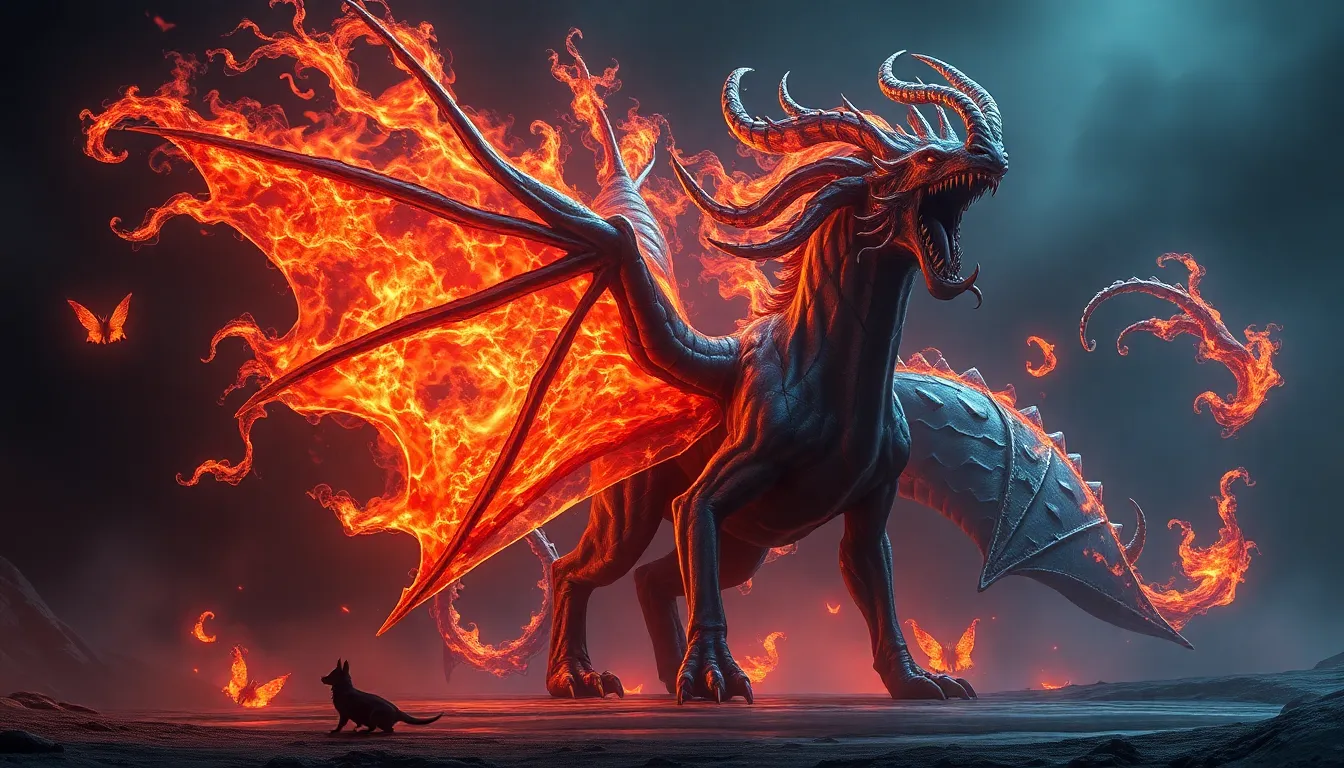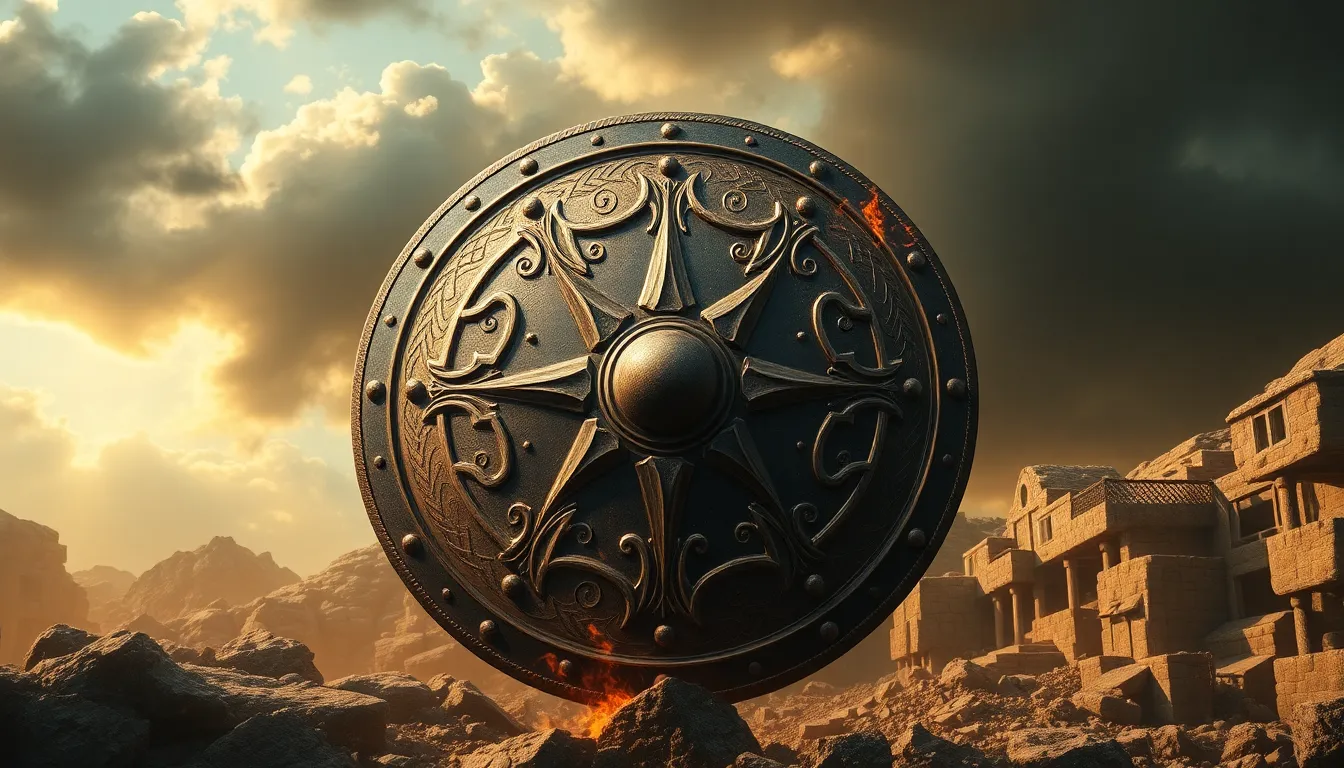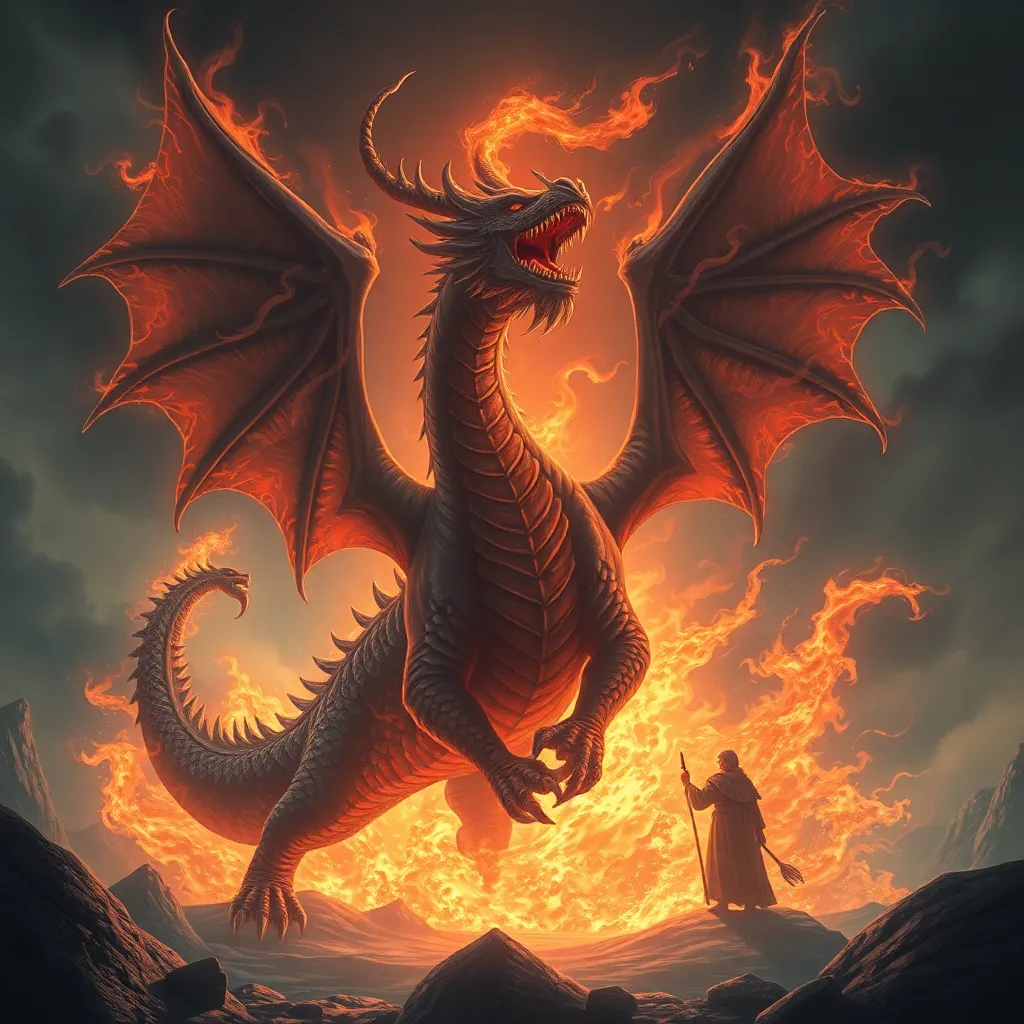The Enigma of the Chimaera: A Beast of Many Forms
Introduction: The Chimaera in Mythology
The Chimaera is one of the most fascinating creatures from Greek mythology, representing a unique blend of different animals and embodying the concept of hybridity. Its origins can be traced back to ancient texts, where it is depicted as a fearsome beast that terrorized the land. The Chimaera, often described as having the body of a lion, the head of a goat emerging from its back, and a serpent for a tail, stands as a potent symbol of the unknown and the chaotic forces of nature.
In many ancient cultures, hybrid creatures like the Chimaera served as metaphors for the complexities of life, often representing the fears and aspirations of humanity. These creatures challenged the boundaries of the natural world, inviting exploration into the realms of the extraordinary and the surreal.
Anatomy of the Chimaera: A Beast of Many Forms
The Chimaera’s physical attributes are strikingly diverse, contributing to its mythological significance. Its anatomy includes:
- Lion: The dominant part of the Chimaera, symbolizing strength, courage, and the primal instincts of nature.
- Goat: Positioned on its back, the goat represents fertility, abundance, and a mischievous spirit.
- Serpent: The tail of the Chimaera, embodying transformation, cunning, and the dangers lurking beneath the surface.
Each component of the Chimaera not only contributes to its fearsome appearance but also holds rich symbolic meanings, reflecting the dualities and complexities of existence.
The Chimaera in Ancient Literature
The Chimaera has been referenced in several key literary sources throughout history. Notable mentions include:
- Homer: In “The Iliad,” the Chimaera is described as a monstrous creature that breathes fire, posing a significant challenge to the heroes of the tale.
- Hesiod: In “The Theogony,” the Chimaera is depicted as a child of Typhon and Echidna, further emphasizing its connection to chaos and monstrosity.
The role of the Chimaera in these epic tales often serves to test the mettle of heroes, forcing them to confront their fears and embody their virtues in the face of adversity. Its impact on storytelling underscores the theme of battling chaos in pursuit of order and heroism.
Cultural Interpretations of the Chimaera
The concept of the Chimaera is not limited to Greek mythology; various cultures have developed their interpretations of hybrid creatures. Examples include:
- Mesopotamian Creatures: The Lamassu, a protective deity with a lion’s body and a human head, reflects the fusion of strength and intelligence.
- Egyptian Mythology: The Sphinx, with a lion’s body and a human head, symbolizes mystery and the power of knowledge.
Cross-cultural comparisons reveal a common fascination with hybrid beings, serving as a lens through which societies explore their values, fears, and the nature of existence.
The Chimaera as a Symbol of Chaos and Transformation
In mythology, the Chimaera is often seen as a representation of chaos—an embodiment of the unpredictable and uncontrollable aspects of life. Its very existence challenges the notion of order, reflecting humanity’s struggle against the chaos inherent in the world.
Furthermore, the theme of transformation and duality is central to the Chimaera’s narrative. It serves as a reminder that life is not always black and white, but rather a spectrum of experiences that can lead to growth and understanding. The Chimaera teaches us that embracing chaos can often lead to transformation.
The Chimaera in Art and Iconography
Throughout history, the Chimaera has inspired countless artistic representations, each capturing its essence in different ways. Key artistic trends include:
- Ancient Sculpture: The Chimaera was often depicted in stone carvings, showcasing its hybrid form and fierce demeanor.
- Renaissance Paintings: Artists like Leonardo da Vinci explored the Chimaera in their works, emphasizing its symbolic nature.
- Pottery: Greek vases often featured scenes of heroes battling the Chimaera, illustrating the creature’s place in mythological narratives.
The evolution of the Chimaera’s imagery reflects changing cultural attitudes and artistic styles, showcasing its lasting influence on the human imagination.
The Chimaera and Modern Interpretations
In contemporary literature and media, the Chimaera continues to captivate audiences. Its portrayal has evolved, reflecting modern themes and concerns. Examples include:
- Fantasy Literature: The Chimaera appears in works by authors such as J.K. Rowling and Rick Riordan, often symbolizing the clash between good and evil.
- Video Games: In games like “Final Fantasy,” the Chimaera is portrayed as a formidable enemy, embodying the chaos that characters must overcome.
The Chimaera has transcended its mythological roots to become a metaphor for the complexities of modern storytelling, representing the struggles and aspirations of contemporary society.
Scientific Connections: The Chimaera in Nature
Interestingly, the concept of chimerism has real-life implications in biological sciences. Genetic chimeras are organisms composed of cells with different genetic compositions. This phenomenon can occur in various ways, including:
- Natural Chimeras: These occur in twin animals, where cells from one twin can integrate into the other.
- Artificial Chimeras: Scientists can create chimeric organisms for research purposes, exploring genetic diseases and developmental biology.
The study of chimerism offers insights into genetics and the complexities of life, echoing the mythological Chimaera’s themes of hybridization and transformation.
The Chimaera in Popular Culture
The Chimaera’s presence in popular culture is pervasive, particularly in video games, comics, and fantasy literature. Its impact is evident in:
- Video Games: Titles like “The Legend of Zelda” and “Monster Hunter” feature Chimaera-like creatures, drawing on its mythological roots.
- Fantasy Literature: Authors often use the Chimaera as a symbol of conflict and resilient spirit in their narratives.
Its adaptability and multifaceted nature make the Chimaera a popular choice for creators exploring themes of chaos, heroism, and the struggle against overwhelming odds.
Conclusion: The Enduring Legacy of the Chimaera
The Chimaera remains a powerful symbol in both mythology and contemporary culture. Its complex nature serves as a reflection of human fears and aspirations, illustrating the eternal struggle between chaos and order. As we continue to engage with the Chimaera in various forms of storytelling, we deepen our understanding of the dualities that define our existence.
In essence, the Chimaera is not just a mythological creature; it is a representation of the human condition, a reminder that from chaos can arise transformation, and from fear can emerge strength.



